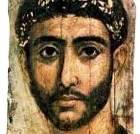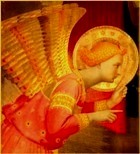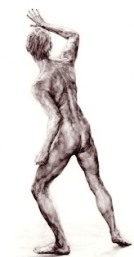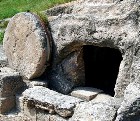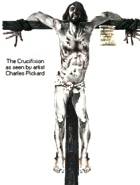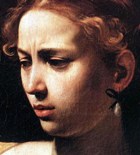1 Madonna and Child with Angels, Fra Filippo Lippi
2 Head of Christ, Richard Hook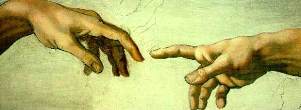
3 The Dead Christ, Mantegna
4 Creation of Adam, Sistine Chapel, Michelangelo
5 Christ of St John of the Cross, Salvador Dali
6 Visit of the Queen of Sheba to King Solomon, Edward Poynter
7 The Wilton Diptych
8 The Virgin of the Rocks, Leonardo da Vinci, 1483
9 Judith Beheading Holofernes, Caravaggio
10 The Annunciation, Fra Angelico
1. Madonna and Child with Angels, Lippi
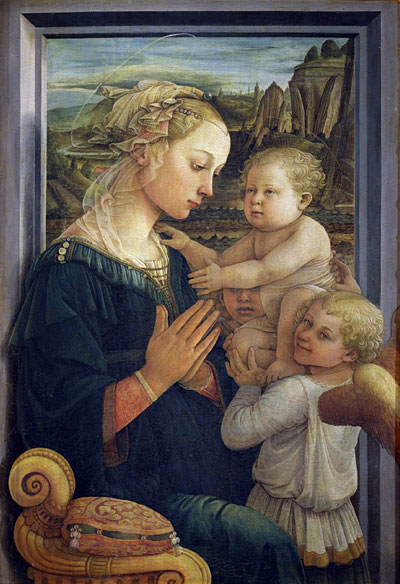
Madonna and Child with Angels, Fra Filippo Lippi, 1457-1465
Madonna & Child, Filippo Lippi: information
- Fra Filippo Lippi’s paintings are contradictory. On the one hand they are religious and pious, but on the other they are sensual, with a Renaissance passion for this world.
- The model for this painting is said to have been Lucrezia Buti, a beautiful young novice in the convent where Lippi was working; she posed for him, then the couple absconded. They had a son and a daughter.
- There is no attempt at reality in this painting of Mary, no hint of the Jewish peasant girl that she was. Lippi’s Virgin wears a huge pearl over her finely coiffured hair and a string of pearls receding in a striking triangle from her high forehead.
- The laughing angel has traditionally been seen as a portrait of their son, Filippino. He also became a painter, creating some of the greatest Renaissance grotesques in the Strozzi Chapel frescoes at Santa Maria Novella, Florence.
- Notice that the Madonna sits outside a frame, casting a shadow on the wall behind her. This heightens the realism, making her seem more like a real woman rather than an ethereal, remote being.
2. Head of Christ, Richard Hook
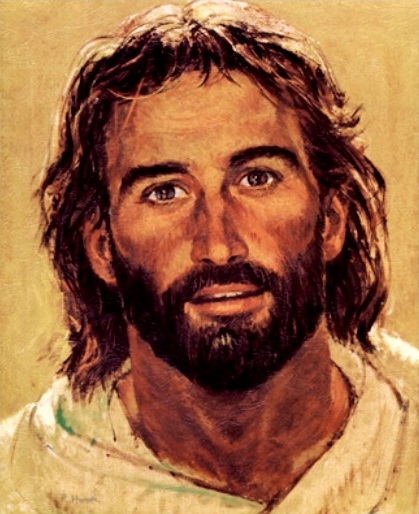
‘Head of Christ’, Richard Hook
Head of Christ, Richard Hook – information
- This is one of the most popular images of Christ ever painted, more familiar to modern-day Christians than the famous medieval paintings on this page.
- It is a modern imagining of Christ: approachable, energetic, full of hope.
- It does not depict an event in Christ’s life, as traditional religious paintings do, but rather the man himself, and someone who represents the qualities that modern Christians try to emulate. This Christ is a man of faith, at once idealistic and realistic, with faith in the ultimate triumph of Good.
3. The Dead Christ, Mantegna
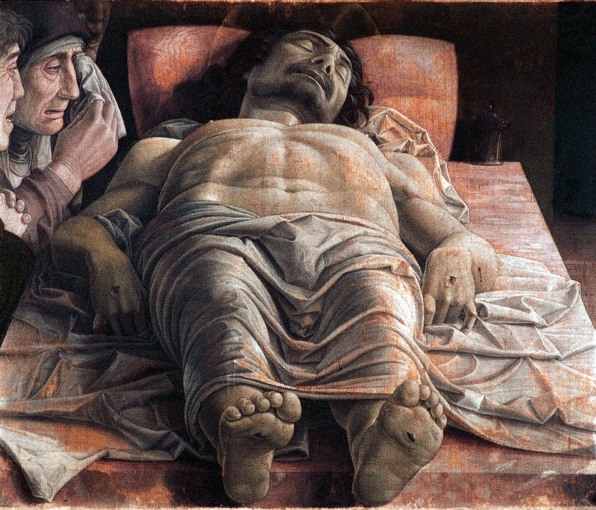
The Dead Christ, Mantegna, 1399
The Dead Christ, Mantegna – information
This painting is unusual in that it ignores Joseph of Arimathaea and Nicodemus, major figures in pictures of the entombment of Christ.
Instead the artist places the women in the tomb with the dead body of Jesus. It is they, Mantegna suggests, who washed Jesus’ body and wrapped it in the linen winding sheets.
- This is probably close to the actual truth. It was women in ancient Israel who prepared dead bodies for burial, not men (see Bible Archaeology: Tombs). It is they who, in this painting, have already washed the blood from Christ’s mutilated body. Mantegna hardly shows the women’s faces, but even so they are a powerful part of the picture.
- Mantegna was a master of perspective. He tried to create spatial depth and realistically depict a lying, and in this case motionless, human body. Christ’s body, lying on the stone slab, is one of the most striking examples in Rennaissance art of realistic foreshortening of the human body.
- The painting also shows the reality of death: the pallor of a body almost drained of blood.
4. Creation of Adam, Michelangelo
The hands of Adam and God: is this the most famous detail in all art?
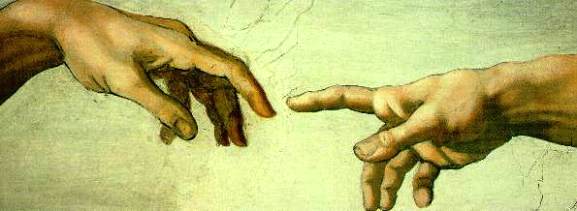
Creation of Adam, Sistine Chapel, Michelangelo, 1508-1512
The Italian writer Vasari said that God was so dissatisfied with all the art that had been done so far that he finally sent down Michelangelo to correct the situation. Who knows?
Michelangelo’s Adam – information
- A monumental, energy-charged God extends his index finger towards the lethargic, newly created Adam. Michelangelo has captured the idea of God as the source of life.
- God’s figure is framed by a sweeping dark-red cloak, almost like a womb. It contains a crowd of figures, including a woman – a yet uncreated Eve? She is in God’s mind but not yet a reality.
- In contrast, Adam reclines languidly on the newly created Earth. He has not yet been touched by the life force.
- The hands of the two figures are especially important (and justly famous) because they represent Adam and God so brilliantly: created, and Creator.
5. Crucifixion, Salvador Dali
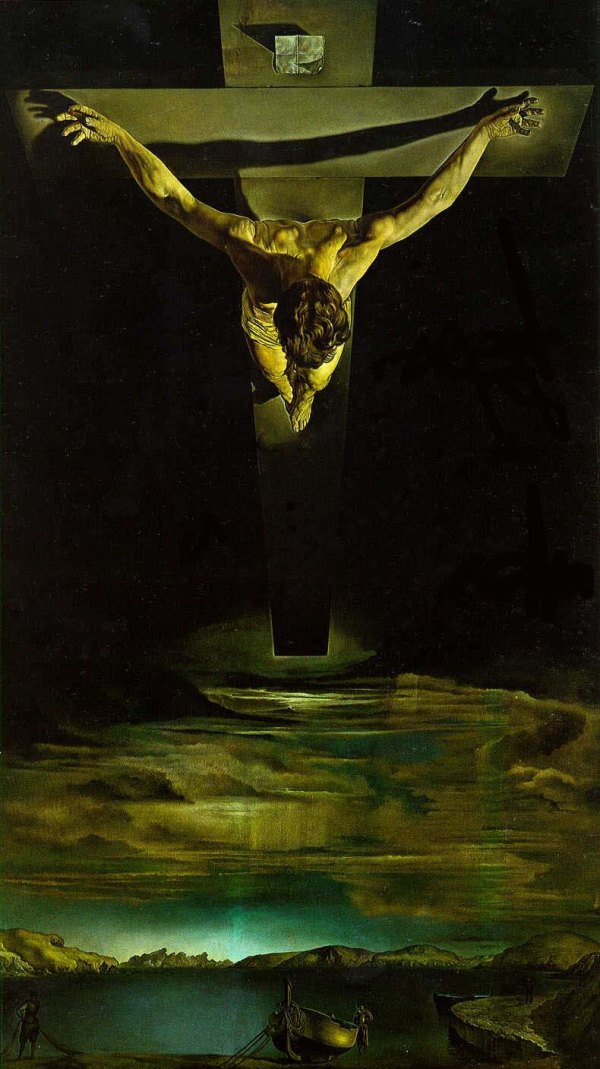
Christ of St John of the Cross, Salvador Dali, 1951
Salvador Dali, Crucifixion – information
- one of Dali’s (and Surrealism’s) favorite ploys was to displace objects from their normal position or environment so that the viewer was startled into looking at the subject with fresh eyes. The Surrealists wanted to challenge conventions, make people think
- this painting, Christ of St John of the Cross, was inspired by a drawing by the Carmelite friar St John of the Cross (1542-91), recording a vision he had in which he looked down on the crucifixion from above. The viewer hovers above Christ, taking the perspective of God the Father and the Holy Spirit.
- below Christ is a landscape with sky, a lake and a boat, suggesting the Lake of Galilee. Here Christ commanded his apostles to be ‘fishers of men’. The lake and the landscape is modelled on Port Lligat, where Dali was born – suggesting that Christ’s death meant life for humanity.
6. Visit of the Queen of Sheba, Poynter
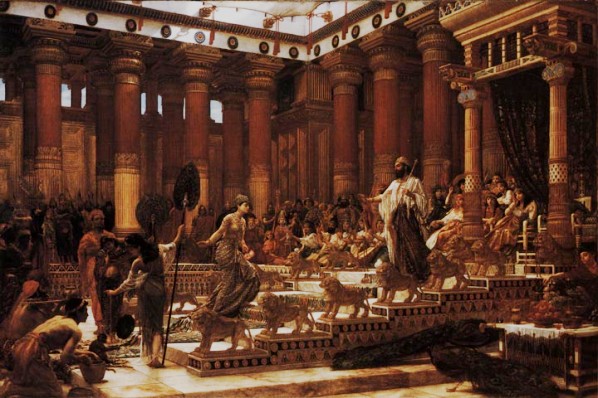
The Visit of the Queen of Sheba to King Solomon, Edward Poynter, 1890
Solomon & Sheba, Poynter – information
Solomon was the son of David and Bathsheba. He is best known for his wisdom and the luxury of his court.
- At some stage he was visited by the Queen of Sheba, who wanted to satisfy her curiosity about his wisdom and the magnificence of the buildings he had erected. She came with a great camel train laden with gifts of spices, gold and precious stones. In return Solomon gave her ‘all she desired, whatever she asked, in addition to all he gave her of his royal bounty’.
- Poynter has shown the moment of their first meeting. Solomon is regal, surrounded by his court and the many beautiful foreign wives and concubines who so alarmed the writers of the Bible story.
- The throne room is magnificent, the steps to the throne guarded by twelve golden lions and the throne itself made of ivory overlaid with gold. The Queen of Sheba gestures towards the many exotic gifts she has brought for Solomon. Each monarch is clearly trying to impress the other – but Solomon seems to be winning.
7. The Wilton Diptych
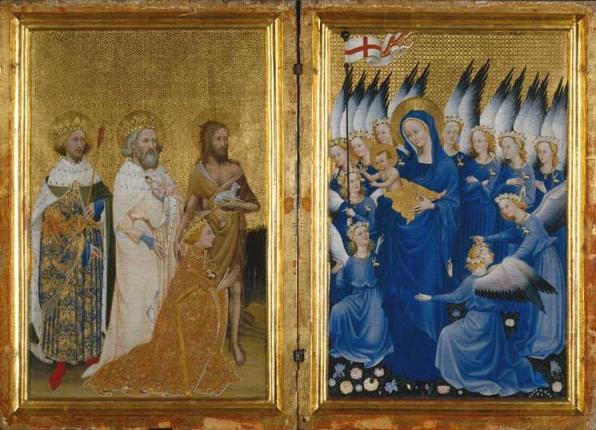
The Wilton Diptych, painter unknown, 1395-99
Wilton Diptych – information
- The full name of this painting is Richard II Presented to the Virgin and Child by his patron Saint John the Baptist and Saints Edward the Confessor and Edmund the Martyr, but it usually called the Wilton Diptych because it was kept at Wilton House, seat of the Earl of Pembroke.
- It was a portable altar which could be quickly set up wherever it was needed. It has two panels which fold together so that they are easy to carry – medieval kings and nobles were constantly on the move.
- It was first created for Richard II (1377-1399), whose emblem was the white hart (stag) – you will notice the plethora of white harts in both panels of the diptych..
- The artist used lapis lazuli to create the blue of the Virgin’s and angels’ clothes.
- Mary and the angels stand on a ground strewn with flowers: it is the Garden of Paradise.
- In the top left hand corner of the right panel is a tiny image of Britain.
8. The Virgin of the Rocks, da Vinci
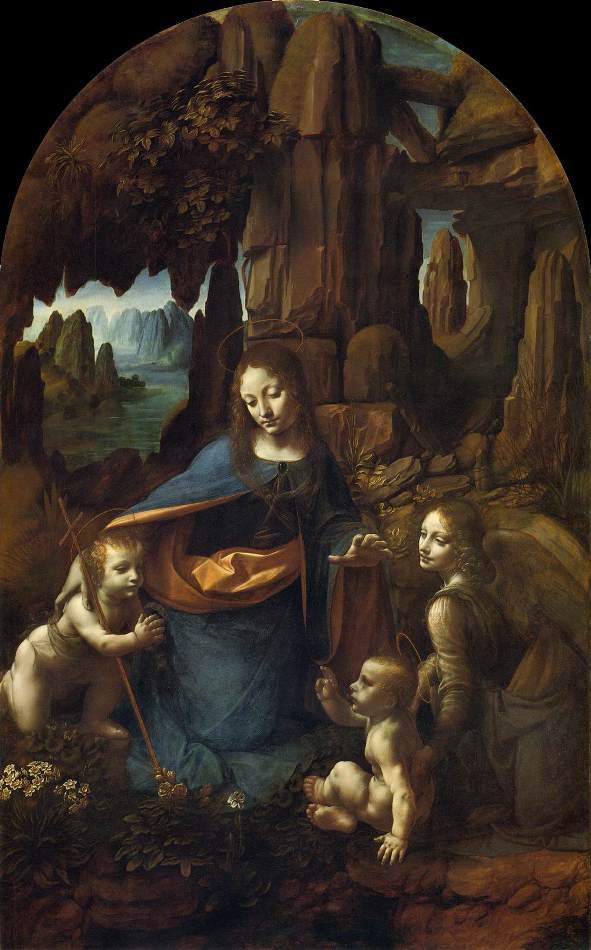
The Virgin of the Rocks, Leonardo da Vinci, 1483
Virgin of the Rocks, da Vinci – information
- Many commentators believe the angels’s face (at right) to be the most beautiful ever painted by Leonardo da Vinci, outdoing the more famous Mona Lisa
- There are two versions of the painting
- The dark, enigmatic space around the figures allowed da Vinci to achieve an aura of mystery and silence. Notice that the landscape around the figures is rocky and barren, but the space they inhabit has clumps of flowers.
- It also gave him an opportunity to experiment with contrasts between light and shade, the subdued light of the foreground and the cold radiance of the distant landscape.
- John the Baptist, held protectively by Mary’s right hand, genuflects towards his younger cousin Jesus, whose right hand is raised in a gesture of blessing
9. Judith Beheading Holofernes, Caravaggio
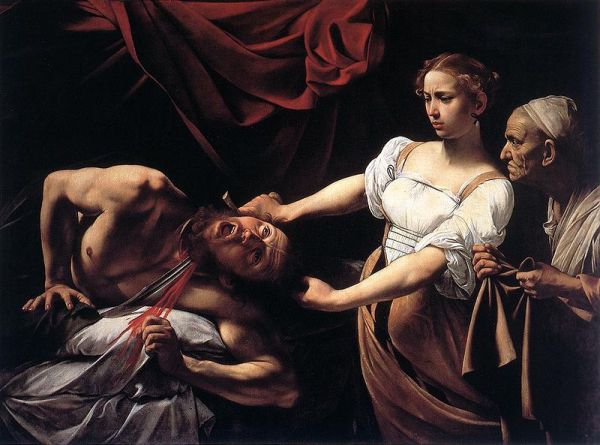
Caravaggio, Judith Beheading Holofernes
Caravaggio’s ‘Judith’ – information
-
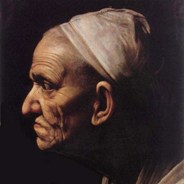
Judith Beheading Holofernes, detail
Holofernes is described in the Bible text as being in a drunken stupor, but in this painting he seems horrifyingly aware of what is happening to him
- Caravaggio was the leading master of chiaroscuro, a method of bringing figures or scenes to life as they emerge from a dark, barely discernible background
- Judith’s beautiful face is a mixture of revulsion and determination
- Notice especially the maid’s face, extraordinary but often overlooked – as indeed was the maid; she is with Judith every step of the way, but is never given a name in the Bible story
10. The Annunciation, Fra Angelico
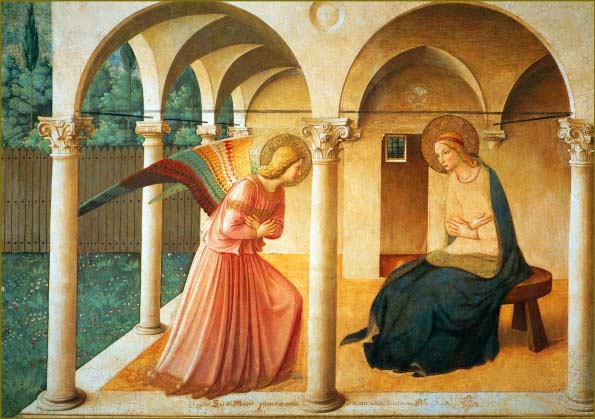
The Annunciation, Fra Angelico, 1438–45
Annunciation, Fra Angelico – information
- Fra Angelico was a member of the Dominican Order; they were lucky to have him. He started as a manuscript illuminator and went on to become one of the major artists of that time.
- He has painted other ‘Annunciations‘, but this is the most famous, perhaps because of its simplicity.
- Mary is sitting in an airy, open space, alone with her thoughts, when the Angel Gabriel appears. Mary’s demeanor is modest, her expression startled, but Gabriel leans forward with what looks like urgency. Much depends on Mary’s answer to the angel’s question.
- The airiness of the space Mary and the angel inhabit is reinforced by the garden outside; the grass is sprinkled with simple wild flowers and surrounded by what looks remarkably like a modern paling fence.
Bible Study Resource for
FAMOUS RELIGIOUS PAINTINGS
© Copyright 2006
Elizabeth Fletcher

